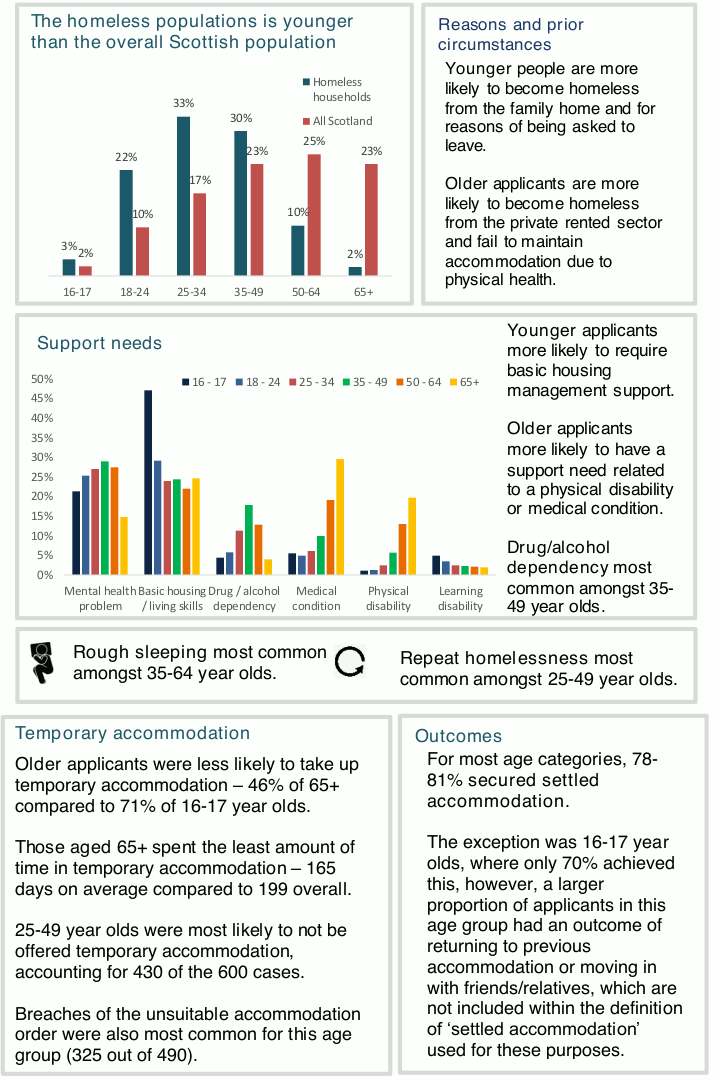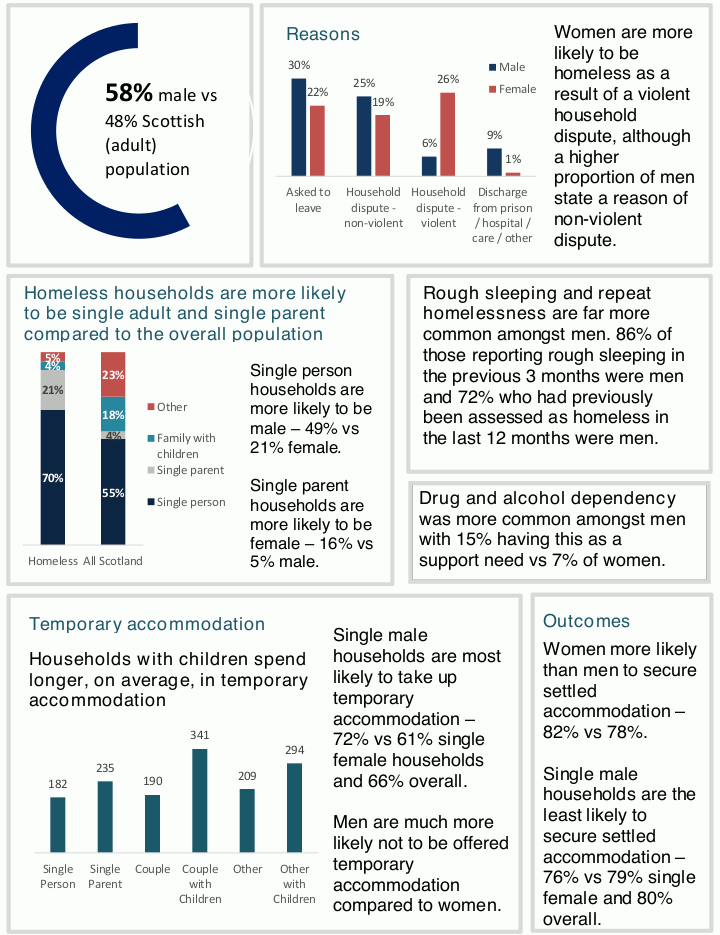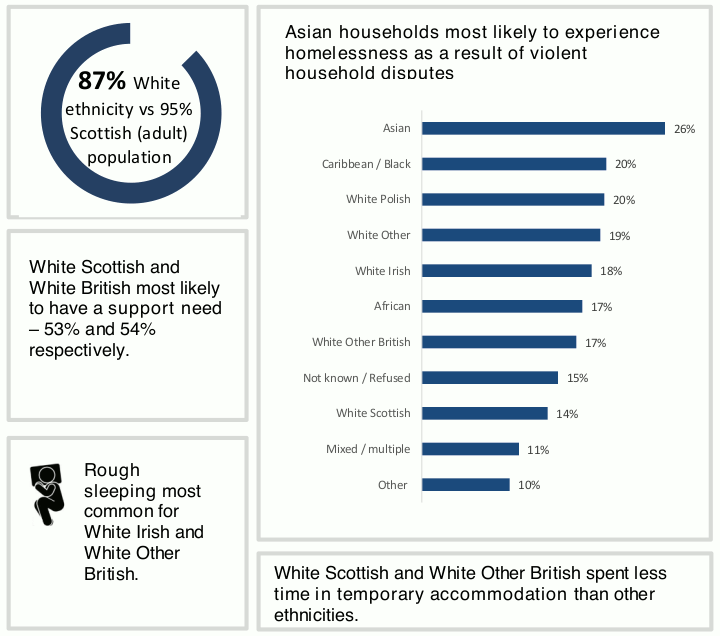Homelessness in Scotland: 2020 to 2021
This statistics bulletin provides information on homelessness in Scotland in the period from 1 April 2020 to 31 March 2021, alongside historical data.
Characteristics of the homeless population
The following findings provide a broad overview of the characteristics of the homeless population and how they compare to the Scottish (adult) population. They highlight key findings where differences exist for aspects of homelessness across the characteristics of age, gender and ethnicity. Characteristics are based on those of the main applicant.
Detailed figures are available in accompanying characteristics tables. Caution should be taken when interpreting results based on small numbers of households. This is particularly true when comparing results for different ethnic groups.
Age

Main points for age:
- The homeless populations is younger than the overall Scottish population.
- Younger people are more likely to become homeless from the family home and for reasons of being asked to leave. Older applicants are more likely to become homeless from the private rented sector and fail to maintain accommodation due to physical health.
- Younger applicants are more likely to require basic housing needs support.
- Older applicants are more likely to have a support need related to a physical disability or medical condition.
- Drug/alcohol dependency is most common among 35-49 year olds.
- Rough sleeping is most common amongst 35-64 year olds.
- Repeat homelessness is most common amongst 25-49 year olds.
- Older applicants were less likely to take up temporary accommodation – 46% of 65 or older compared to 71% of 16-17 year olds.
- Those aged 65 or older spent the least amount of time in temporary accommodation – 165 days on average compared to 199 overall.
- 25-49 year olds were most likely to not be offered temporary accommodation, accounting for 430 of the 600 cases.
- Breaches of the unsuitable accommodation order were also most common for this age group (325 out of 490).
- For most age categories, 78-81% secured settled accommodation. The exception was 16-17 year olds, where only 70% achieved this. However, a larger proportion of applicants in this age group had an outcome of returning to previous accommodation or moving in with friends/relatives, which are not included within the definition of ‘settled accommodation’ used for these purposes.
Gender & household type

Main points for gender and household type:
- 58% of homeless households had a main applicant that was male. This compares to 48% of the Scottish adult population.
- Women are more likely to be homeless as a result of a violent household dispute, although a higher proportion of men state a reason of non-violent dispute.
- Homeless households are more likely to be single adult and single parent compared to the overall population.
- Single person households are more likely to be male – 49% compared to 21% female. Single parent households are more likely to be female – 16% compared to 5% male.
- Rough sleeping and repeat homelessness are far more common amongst men. 86% of those reporting rough sleeping in the previous 3 months were men and 72% who had previously been assessed as homeless in the last 12 months were men.
- Drug and alcohol dependency was more common amongst men with 15% having this as a support need compared to 7% of women.
- Households with children spend longer, on average, in temporary accommodation.
- Single male households are most likely to take up temporary accommodation – 72% compared to 61% single female households and 66% overall.
- Men are much more likely not to be offered temporary accommodation compared to women.
- Women are more likely than men to secure settled accommodation – 82% compared to 78%.
- Single male households are the least likely to secure settled accommodation – 76% compared to 79% single female and 80% overall.
Ethnicity

Main points for ethnicity:
- The main applicant for 87% of homeless households was of white ethnicity.
- White Scottish and White British most likely to have a support need – 53% and 54% respectively.
- Asian households most likely to experience homelessness as a result of violent household disputes.
- White Scottish and White British most likely to have a support need – 53% and 54% respectively.
- Rough sleeping most common for White Irish and White Other British.
- White Scottish and White Other British spent less time in temporary accommodation than other ethnicities.
Contact
There is a problem
Thanks for your feedback